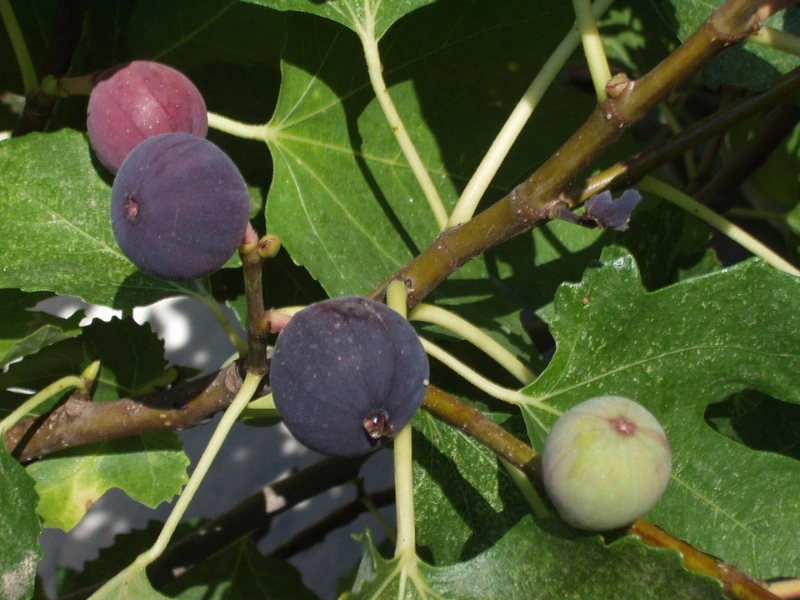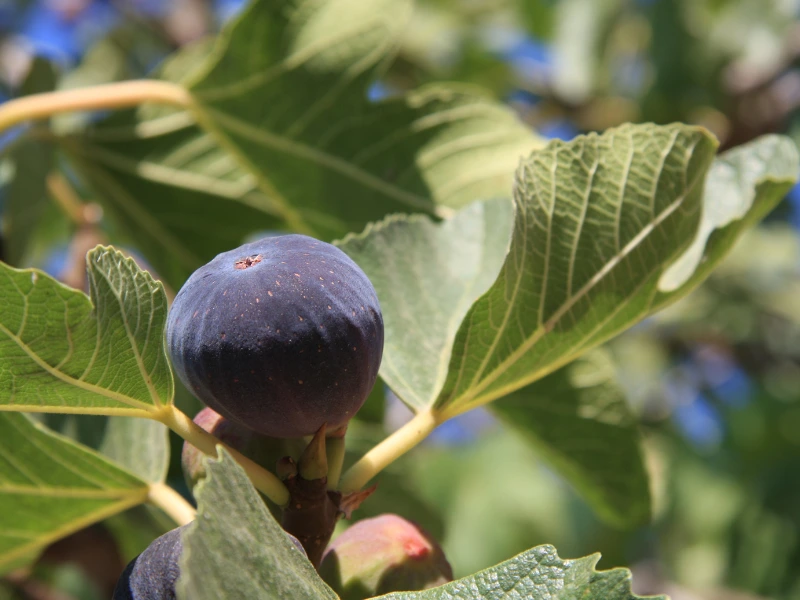Have you recently bought a Black Jack fig tree and are wondering how to take care of it? Or maybe your tree isn’t thriving, and you’re looking for solutions? Don’t worry; you’re not alone! Many fig tree enthusiasts struggle with proper care, watering schedules, pruning techniques, and pest control.
This guide will walk you through everything you need to know about growing and maintaining a Black Jack fig tree. Whether you’re planting in the ground or growing it in a container, these expert tips will help you maximize your fig harvest and keep your tree thriving year-round.

What Is a Black Jack Fig Tree?
The Black Jack fig (Ficus carica ‘Black Jack’) is a semi-dwarf fig variety known for its large, sweet, and richly flavored fruit. It’s a great option for gardeners with limited space since it thrives in both containers and small gardens. The fruit has a deep purplish skin and a vibrant red interior, making it a delicious and visually appealing addition to your fig collection.
One of the best things about the Black Jack fig is that it produces fruit twice a year—a smaller early crop (breba) in late spring and a larger main crop in late summer to fall. This makes it a rewarding choice for fig lovers who want a steady supply of fresh fruit.
Read more: Everything You Need to Know About Black Jack Fig: Taste, Benefits & More
Key Features:
- Size: Can grow up to 12–15 feet tall but can be maintained at 6–8 feet with regular pruning.
- Fruit: Produces large, dark purple figs with sweet, juicy, and reddish flesh.
- Climate: Thrives in USDA Zones 7-10, though it can be grown in colder climates if protected during winter.
- Growth Habit: Naturally dwarfed when pruned, making it an excellent option for urban gardeners or container growing.
How to Grow Black Jack Fig Trees
1. Choosing the Right Location
To grow a healthy and productive Black Jack fig tree, choosing the right location is key. This tree thrives in full sun, requiring at least 6-8 hours of sunlight daily for optimal growth and sweet fruit production. The ideal soil should be loamy and well-draining, with a pH level between 6.0 and 6.5, ensuring the roots can absorb nutrients efficiently.
Additionally, make sure the planting area has good air circulation, avoiding overly shaded or crowded spots, as excess moisture can lead to fungal diseases. Selecting the perfect location from the start will set your Black Jack fig tree up for strong growth and a bountiful harvest!

2. Planting a Black Jack Fig Tree
A. Planting in the Ground
- Dig a hole twice as wide and just as deep as the root ball.
- Mix in organic compost to improve soil fertility.
- Place the tree, ensuring the crown is at soil level.
- Fill the hole with soil and water thoroughly.
B. Planting in a Container
- Use a 15-20 gallon container with good drainage.
- Fill with a high-quality potting mix, preferably one formulated for fruit trees.
- Position the pot in a sunny spot on a patio, balcony, or garden.
3. Watering
Fig trees need consistent watering, but they hate soggy roots. Here’s how to do it right:
- Newly planted trees: Water 2-3 times per week for the first month.
- Established trees: Water once per week or when the top 2 inches of soil feel dry.
- Potted trees: Water more frequently (every 3-4 days) as containers dry out faster.
4. Fertilizing
To promote healthy growth and fruit production, use the right fertilizer:
- Spring (before new growth): Apply a balanced 10-10-10 fertilizer.
- Summer (during fruit development): Use a low-nitrogen fertilizer to encourage fruiting.
- Fall: Stop fertilizing to allow the tree to go dormant.
Pro Tip: Avoid over-fertilizing as too much nitrogen can lead to excessive leafy growth with fewer figs!
5. Pruning for Healthy Growth
Pruning keeps your fig tree compact, productive, and disease-free.
- Winter Pruning: Remove dead or weak branches to shape the tree.
- Summer Pruning: Trim back excessive growth to increase airflow and improve fruit production.
- Pinching Tips: Pinch off new growth tips to encourage branching.
6. Pest & Disease Management
Even with the best care, fig trees can face challenges. Here’s how to handle them:
- Fig Rust: Remove affected leaves and ensure good airflow.
- Aphids & Spider Mites: Spray with a neem oil solution or use ladybugs as natural predators.
- Root Rot: Ensure proper drainage and avoid overwatering.
7. Winter Care for Black Jack Fig Trees
While Black Jack figs thrive in warm climates, they’re hardier than you might expect. Even if freezing temperatures cause the above-ground branches to die back, a well-established root system can survive and send out new growth in the spring. Since Black Jack figs produce fruit on new wood, you can still get a crop—even after a harsh winter.
There’s no exact temperature at which your fig will die back completely, but once temperatures drop below 20°F (-6°C), dieback becomes more likely. If temps dip into the single digits, your fig may lose all its top growth. Cold winds can make things worse, so planting your fig near a building or fence can offer some extra protection.
Winter Protection for Potted Black Jack Figs
Figs grown in containers are more vulnerable to cold because their roots don’t have the same insulation as those planted in the ground. If possible, bring your potted Black Jack fig into a cool garage, basement, or greenhouse for the winter. If moving it indoors isn’t an option, consider wrapping the pot in insulation or even burying it partially in the soil to provide some warmth.
Keeping Your Fig’s Wood Alive Through Winter
If you want to protect the branches and avoid dieback, you can wrap your fig tree in burlap, canvas, or a tarp. For extra insulation, fill the wrapping with straw, dry leaves, or mulch to help trap heat. Young trees are more vulnerable to winter damage, so be sure to give newly planted Black Jack figs extra care in their first few winters.
Read more: Winter Care for Fig Trees: Essential Tips for Frost Protection
Harvesting & Storing Black Jack Figs

This is the moment you’ve been waiting for! As your figs develop, regular watering is key to ensuring plump, delicious fruit. Check your tree daily and harvest just as the figs ripen. The main crop ripens at different times depending on your climate, from June to September in warmer inland areas and from October to November in cooler coastal regions. In tropical climates, fig trees may produce fruit year-round, with peak production in early summer and midwinter.
How to Tell When Figs Are Ripe and Ready to Pick
Ripe figs will start softening at the neck, and you’ll notice other telltale signs: skin color changes, the fruit droops slightly, the skin may crack, a drop of honey appears at the eye, and the fig grows larger. Picking at the right time prevents overripe fruit from falling off the tree and going to waste.
Best Ways to Store Freshly Picked Figs
Once harvested, proper storage is essential to keep figs fresh:
- For short-term storage, keep them in a cool, dry place or refrigerate them to extend their freshness.
- For long-term storage, freeze figs by trimming the stems, spreading them in a single layer on a baking sheet, freezing them solid, and then transferring them to an airtight container or freezer bag.
How to Preserve Figs for Year-Round Enjoyment
If you want to enjoy your figs beyond the harvest season, here are a few preservation methods:
- Drying: Slice fresh figs and dry them in a dehydrator or oven for a naturally sweet snack.
- Canning: Preserve figs in syrup or juice and process them using a water bath canner.
- Making Fig Preserves: Cook fresh figs with sugar and lemon juice until thickened, then store in jars for delicious spreads.
FAQ About Black Jack Fig Trees
1. Can I grow Black Jack figs in a container?
Yes! Black Jack figs do very well in pots. Just make sure to use a large container with drainage holes and repot every few years as the tree grows.
2. How long does it take for a Black Jack fig tree to produce fruit?
Most Black Jack fig trees begin producing within 2–3 years of planting. If grown from a cutting, it may take slightly longer.
3. Do I need to protect my Black Jack fig tree in winter?
If you live in a colder climate (below 15°F / -9°C), consider wrapping the tree’s base in burlap or moving a potted tree indoors during extreme cold.
4. How often should I water my Black Jack fig?
Water deeply once a week in warm weather. Reduce watering in winter when the tree goes dormant.
5. How big does a Black Jack fig tree get?
In the ground, it can grow up to 15 feet tall, but with pruning, you can keep it at 6–8 feet—perfect for small gardens or container growing.
Final Thoughts
Growing a Black Jack fig tree is a rewarding experience, whether in the ground or in a container. With the right care—proper watering, fertilization, pruning, and pest management—you’ll enjoy delicious, homegrown figs year after year.
Now that you know how to successfully grow and care for a Black Jack fig tree, why not plant one today? Happy gardening!
